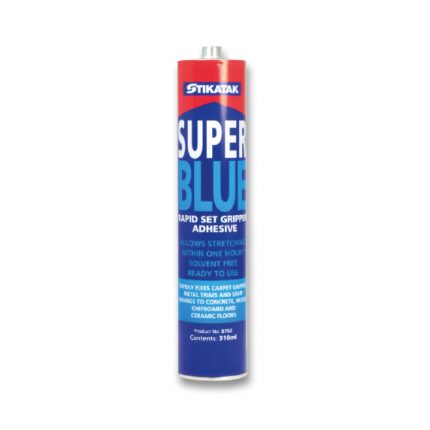









Floor adhesive is a type of glue designed specifically designed for installing flooring. Not all types of flooring require adhesive and different types of flooring require different types of adhesive. Get in touch if you need help choosing the right type of adhesive for your installation. We’re always happy to help.
It is sometimes necessary to glue down an underlay. For example, in a double-stick installation, underlay is glued to the sub-floor using a release type adhesive.
The adhesive is applied evenly on to the floor and planks are laid on top. This keeps the flooring securely in place throughout its lifetime.
Adhesive is the best way to install a beautifully finished engineered hardwood floor. This applies to both floor and stair installations.
You don’t need to use adhesive for loose lay vinyl, but you can use it around the perimeter for a more secure installation.
Adhesive is spread on to the floor and the tiles are placed on top. They should be evenly spaced using tile spacers. Then, grout is spread into cracks, filling the joints between the tiles and creating a seamless finish. Grout protector is also useful for extending the life of your installation. Sealant should also be used around the perimeter of the room to seal the gap between the tiles and the wall.
An underlay is glued to the subfloor. Then, the carpet adhesive should be spread evenly on the back of the underlay. After this, you should neatly lay the carpet onto the adhesive making sure not to leave any bumps or rises in the carpet. You can smooth out any fullness or air bubbles with a glider.
Luxury vinyl tiles should be laid evenly on the floor, making sure tiles closest to the wall are cut to size if they are too big. The floor surface must be flat, firm, dry, and clean before you apply the LVT. Apply a thin layer of glue to the floor and leave it until it starts to dry. Then, lay the tiles and apply pressure with a 45kg roller (minimum) to ensure it sticks.
Arrange the tiles in the room before applying glue. Then, cut the tiles to size, so they perfectly fit your room. After this, apply adhesive to the ground and leave it to dry until it becomes tacky. Then, apply the carpet tiles to the floor neatly and roll a heavy roller over the tiles to ensure strong adhesion.
Make sure the rubber flooring is cut to the same size as your room. Then, apply a coating of adhesive to the subfloor. Once adhesive is applied to the subfloor, you can roll the carpet onto it. The floor should then be flattened with a roller to remove air bubbles and ensure it holds securely in place.
Roll adhesive onto cork tiles and the underlayment of the room using a paint roller. Then apply tiles to the floor and apply pressure, so the tiles stick.
A lot of people face this problem when looking to install a new floor. Before you even start the installation, you have to ensure the floor is free of old adhesive so your new flooring will stay in place.
To remove adhesive, you need to chip it away. You can use a hammer and chisel to remove the adhesive, but you’re better off using SDS drill, it makes chiselling a lot easier.
You should use hot water to soften the adhesive before you start chiselling, this makes it a little easier. You can also use chemicals if hot water doesn’t soften it enough.
After the adhesive is all chiselled away, you need to sand and clean the floor. You need a perfectly (or almost perfectly) clean floor to ensure your next installation is good quality and will last you a long time.
No, wall tile adhesive will not hold floor tiles securely in place for very long. Wall tile adhesive is designed for use on verticle surfaces. It is not designed to take the weight and won’t hold floor tiles down for very long. It’ll save you a lot of hassle to use the right adhesive for the job first time.